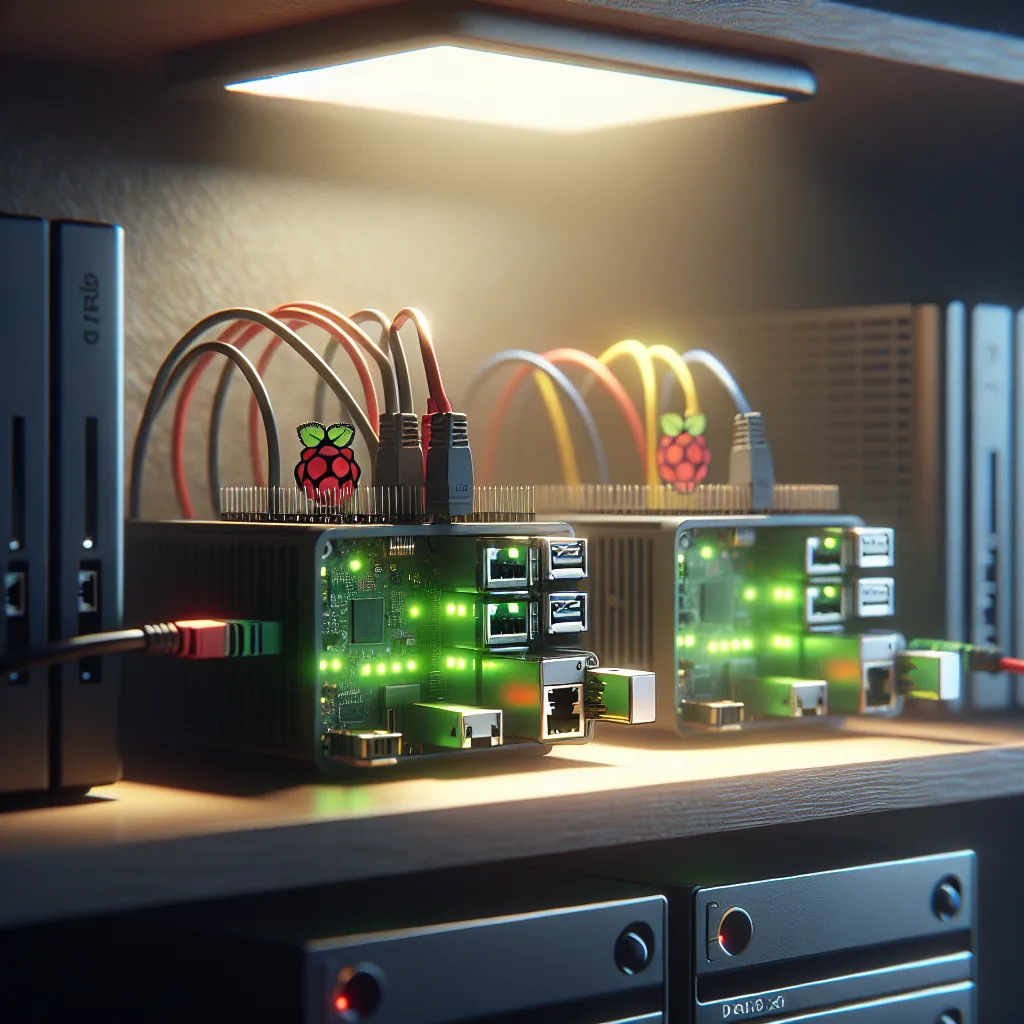Embracing home server redundancy means having two of everything, and it’s saved me more than once.
It started, as these things often do, with a failure. I was out of town, and my partner called me. The internet was “down.” Except it wasn’t, not really. Our home server, which handles our DNS and blocks ads, had decided to take an unscheduled vacation. I couldn’t fix it from hundreds of miles away, so we were stuck with a crippled network until I got back. That was the moment I realized my tidy, single-point-of-failure setup wasn’t cutting it. I needed to embrace a little bit of controlled chaos, and that meant building for home server redundancy. It’s the simple idea that two is one, and one is none.
My setup today isn’t going to win any cable management awards. It’s a bit messy, but it works flawlessly, and more importantly, it’s resilient. It’s built on a simple principle I saw someone mention once: “two of everything.” Two DNS servers, two VPNs, two copies of important files. It might sound like overkill for a home environment, but it brings a level of peace of mind that a “perfect” single-server setup never could.
So, What is Home Server Redundancy?
At its core, home server redundancy is just a fancy term for having a backup plan. It’s the digital equivalent of having a spare tire in your car. You hope you never have to use it, but you’re incredibly glad it’s there when you get a flat. In a home lab context, it means creating failover systems for the services you rely on most. If one component fails—whether it’s a piece of hardware, a software crash, or a botched update—a second component is ready to take over, either automatically or with very little effort.
This isn’t about replicating a massive corporate data center in your basement. It’s about identifying your personal “oh no” scenarios and building a small, practical safety net. For me, that meant tackling the things that would cause the most disruption if they went offline.
My “Rule of Two” Approach to Redundancy
I didn’t try to duplicate my entire server rack overnight. Instead, I focused on the most critical services and gave them a twin. It’s a simple strategy that has saved me more than once.
1. Two DNS Servers
This was my first and most important step. Many of us running a home lab use something like a Pi-hole or AdGuard Home for network-wide ad blocking and local DNS management. It’s fantastic, until it isn’t. When that single Raspberry Pi running your DNS goes down, it can feel like the entire internet has vanished.
- The Fix: I set up a second, identical DNS server. In my case, it’s another small, low-power device running AdGuard Home. My router is configured to use both as primary and secondary DNS servers. If one goes down for maintenance, a reboot, or just because it feels like it, the other one seamlessly handles all the requests. The rest of the family doesn’t even notice. You can learn more about setting up your own DNS server at the official Pi-hole documentation.
2. Two Copies of Critical Data
This one is non-negotiable. If you only have one copy of your family photos, important documents, or media files, you’re living on borrowed time. Hard drives fail. It’s not a matter of if, but when.
- The Fix: I follow the classic 3-2-1 backup strategy. It’s a simple rule that provides a robust framework for data safety.
- 3 Copies of Your Data: The original file on your main server, and two backups.
- 2 Different Media: Don’t save all your copies on the same type of drive. I have my primary copy on my NAS, one backup on an external USB hard drive, and another on a separate machine.
- 1 Copy Off-Site: This is the key. If your house has a fire or flood, all your local copies are gone. My “off-site” copy is a synced backup to a trusted cloud provider.
This strategy ensures that a single point of failure—whether it’s a drive dying or a local disaster—won’t wipe out your irreplaceable data. Tech companies like Backblaze provide great resources on why this is the gold standard for personal data protection.
3. Two VPNs
This might seem excessive, but it provides flexibility. I use a primary VPN for secure, everyday browsing on all my devices. But I also have a second, separate VPN tunnel set up for a very specific purpose: connecting to a family member’s home network for remote server management and diagnostics. This separation ensures that my personal browsing traffic is completely isolated from my remote admin tasks. For those interested in the technical side of VPNs, the Electronic Frontier Foundation (EFF) has a good, non-commercial guide on what to look for.
Is This Level of Home Server Redundancy for You?
Probably not all of it, and that’s okay. The goal isn’t to copy my setup, but to adopt the mindset. You don’t need to rush out and buy two of everything. Start small.
Ask yourself: What’s the one thing I can’t afford to have fail?
For most people, the answer is personal data. So, start there. Perfect your backup strategy first. Get that 3-2-1 system in place. Once you have peace of mind about your data, you can look at other potential points of failure, like your network’s DNS.
My server closet may not be the prettiest, but it’s dependable. It’s a quiet, humming testament to the fact that perfection isn’t the goal—resilience is. And that peace of mind is worth a few extra cables.
